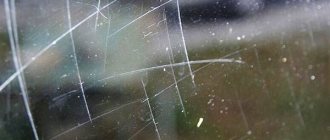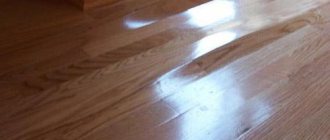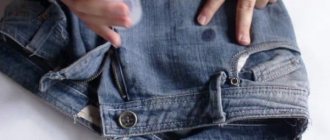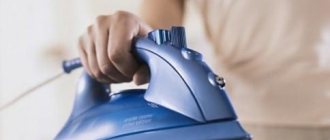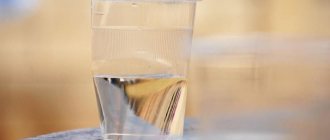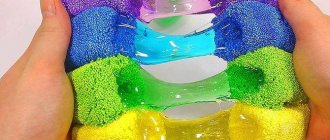It's no secret that laminate is one of the most beautiful and quite practical floor coverings. After correctly selecting all the necessary tools and materials, its installation does not take much time. But caring for such a floor requires special knowledge and skills: proper cleaning, repairing minor defects, restoring color and shine - only a small part of what you should definitely know about.
In eliminating minor defects and scratches, what at first glance will help you is a very inconspicuous tool - a laminate pencil.
In many cases, it plays a key role and helps hide a large number of small damages and defects. Instead of starting to remove sections or cut them out, use wax masking.
These pencils are very simple and effective to use; they consist of dye, wax, and paraffin. Moreover, all options available on the modern market are absolutely environmentally friendly and safe. There are about 250 different colors in total, which allows you to choose the one that is ideal for damaged lamellas.
Getting rid of minor scratches
The occurrence of even the slightest scratches over time is inevitable - they appear due to exposure to abrasive substances: dirt and sand, which are carried into the house on street shoes or fly into the window. In addition, damage may occur during repairs. Removing small scratches will not be difficult.
Polish
It is not difficult to find a special product in a hardware or construction store: in order not to spoil the floor covering, you should look for a label that says “for laminate.”
Wood floor polishes
Mastic
Used for polishing wooden floors. It is available in the form of a ready-made product (usually in tin tubes) or a liquid that must be diluted with water in the required proportion. More expensive products contain wax. Budget analogues are special polymers. Mastics are used immediately after laying the floor covering and periodically (2-3 times a year) to protect the wood from mechanical damage, exposure to water and ultraviolet radiation.
Also, depending on the type, mastics are divided into:
- Hot Compositions are mainly used for block parquet. The base is bitumen or rubber. The mixture must be heated to 160 degrees before use. Not suitable for home use. They are highly flammable and harden quickly after heating, so experience is required to work with such compositions.
- Cold Suitable for use at home, does not require heating. The effect is achieved due to the content of solvents or alcohol, which evaporate and leave a protective film on the surface. The main disadvantage is its heavy, thick texture and long drying time - up to 3 days.
Important: cold mastics can be diluted, but when choosing a solvent, you should carefully study the manufacturer’s recommendations.
- Colored and transparent Perform only protective functions. It is not possible to tint or return the original color to the floor. If the surface has severe abrasions, scratches, or the wood is faded (often happens in rooms located on the sunny side), tint compounds are used. After application, the color of the wood is evened out, and damaged areas are not so noticeable.
- Wax-based They have excellent protective properties and emphasize texture. Increases resistance to mechanical damage and protects against exposure to detergents during cleaning. Depending on the components included in the composition, after application the surface becomes glossy, semi-glossy or matte. The only but significant drawback is a specific and rather pungent odor that will linger in the room for several days. The composition is applied to the floor using a brush. After 7-9 hours, remove any remaining product using a clean cloth. Leave until completely dry for a few more hours. If necessary, apply a second layer.
- Water-based universal compositions that, in addition to protective, cleansing properties, thanks to the components included in the composition. They enjoy well-deserved popularity due to their affordable cost. Apply to the floor using a roller or brush and dry very quickly. Therefore, water-based mastics are an excellent solution for city apartments.
- Water-soluble They are used mainly for wood that is not afraid of moisture, such as oak. The composition is diluted with water in the proportion recommended by the manufacturer. If you plan to use mastic for other types of wood, you can add a little less water. But the composition in this case will be thicker. Water-soluble mastics cannot be used for polishing birch or beech floors, as they are very water-resistant.
Wax and wax polishes
Depending on consistency they are divided into:
- liquid – the easiest to use, it’s easy to treat even hard-to-reach places;
- pasty - more dense, applied with a spatula or a hard brush;
- hard - help to mask defects, scratches and select a shade, including for light wood species.
Wax polishes containing oils are also produced. They penetrate deeply into the wood structure and have good protective properties. Important: before application, it is necessary to thoroughly remove contaminants. If you use oil first, the product consumption will be reduced.
Compositions for laminate
To polish laminate flooring you need special products. Therefore, when purchasing, be sure to look at the composition and purpose - for what kind of coating the product is intended. High-quality polishes contain silicone, which forms a protective film on the surface. With regular treatment - 2.3 times a year, the polish can increase the life of the floor covering. It will give the coating a beautiful glossy shine and disguise scratches.
Do not use wax-based polishes or mastics to polish laminate flooring. Firstly, wax will destroy the protective paint coating, since laminate is not natural wood. Secondly, it will leave stains that will be almost impossible to remove.
Laminate flooring care products are available in the form of sprays and mastics. The application technology is very simple:
- polish is applied to the clean floor;
- evenly distributed on the surface;
Afterwards, the composition is ground using a clean rag.
Prevention of scratches
In order for the laminate to consistently please with its appearance and last longer, it is important to follow the following recommendations:
- Do not use abrasive substances to clean the floor.
- When entering the apartment, you should lay a rug that will prevent the spread of sand brought from the street.
- If you spill liquid on the laminate, you must get rid of the stains immediately, otherwise you will have to rub them with force later.
- Furniture should be moved with caution, using special pads on the legs.
- It is not recommended to walk on laminate flooring in heels that leave dents.
These simple rules will prevent scratches and help save your family budget.
What types are there?
Before you buy a pencil for laminate, you must understand its composition, type and other important characteristics.
Very often, such materials are classified as correctors, and for laminated and parquet floors you can use:
- Retouching markers;
- wax pencils.
A retouching marker most often resembles a felt-tip pen we are used to, but in this case it will be filled with a special tinted varnish, which will dry very quickly after use. Its peculiarity is that it is quite resistant to water, as well as a number of detergents, which means you will not be reapplying it soon.
Immediately before use, shake the retouch marker several times, press the tip of its ink rod inward and hold until the masking product comes out. Then you can start retouching.
Often, after use and drying, several layers of varnish are applied in order to tightly cover the marker.
As for the wax pencil for laminate, they should be used to treat exactly those places that have been subject to quite strong chemical or mechanical stress, and therefore have changed. Special crayons contain a number of special additives with water-repellent properties, as well as excellent adhesion properties. It is these characteristics that ensure a sufficiently long preservation of the material on the surface.
Be sure to take into account the fact that such compositions differ in the degree of softness. So, the harder the crayons, the longer they can serve as masking agents for laminated surfaces.
Removing scratches on laminate flooring at home
Minor damage can be removed yourself without dismantling the entire floor or replacing individual panels.
Before starting all work, it is necessary to prepare the floor - wash it and let it dry.
Photo tips on how to remove scratches on laminate flooring
Read here How to wash off henna - ways to remove henna from skin, hair and various surfaces at home (135 photos)
Did you like the article? Share 
2+


